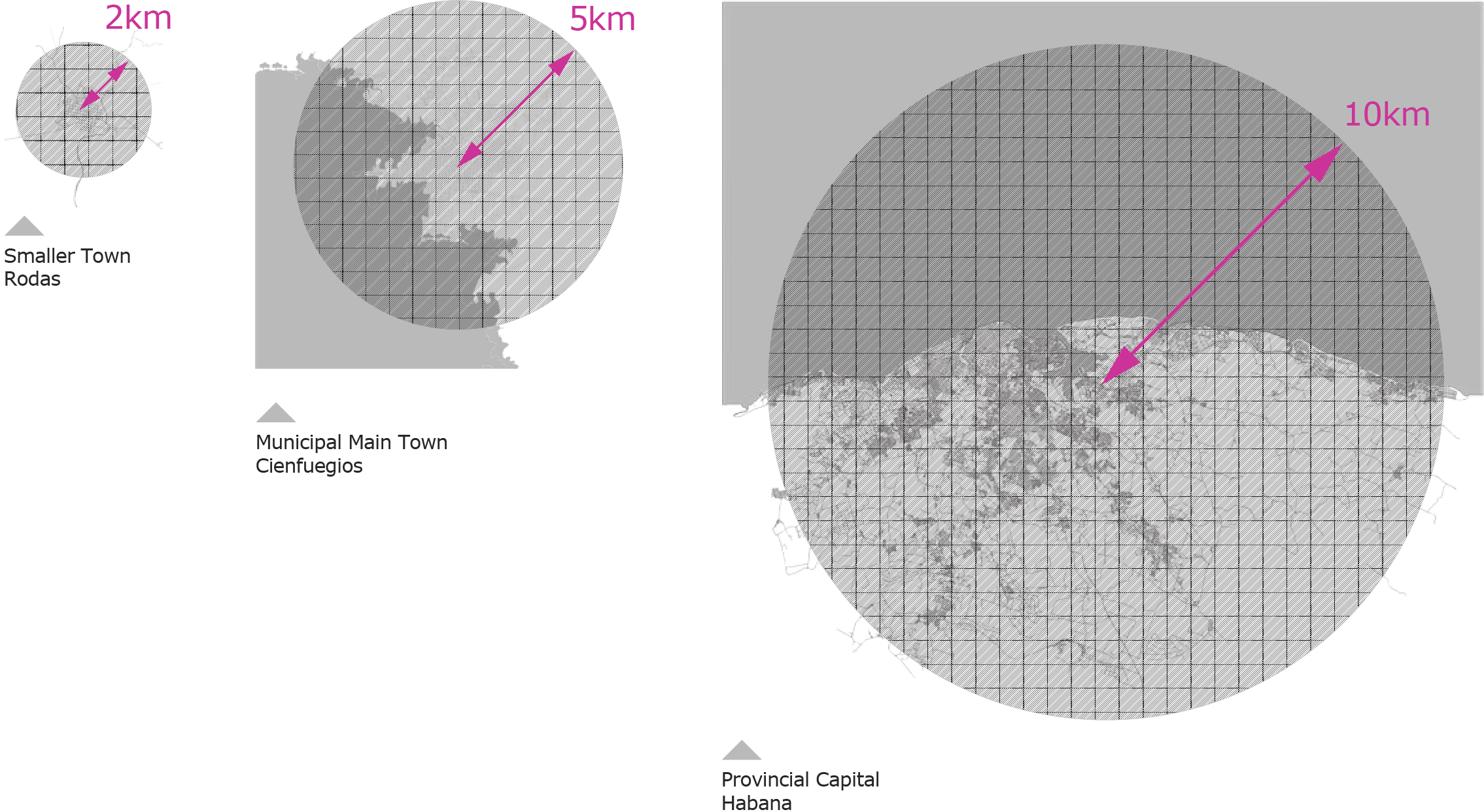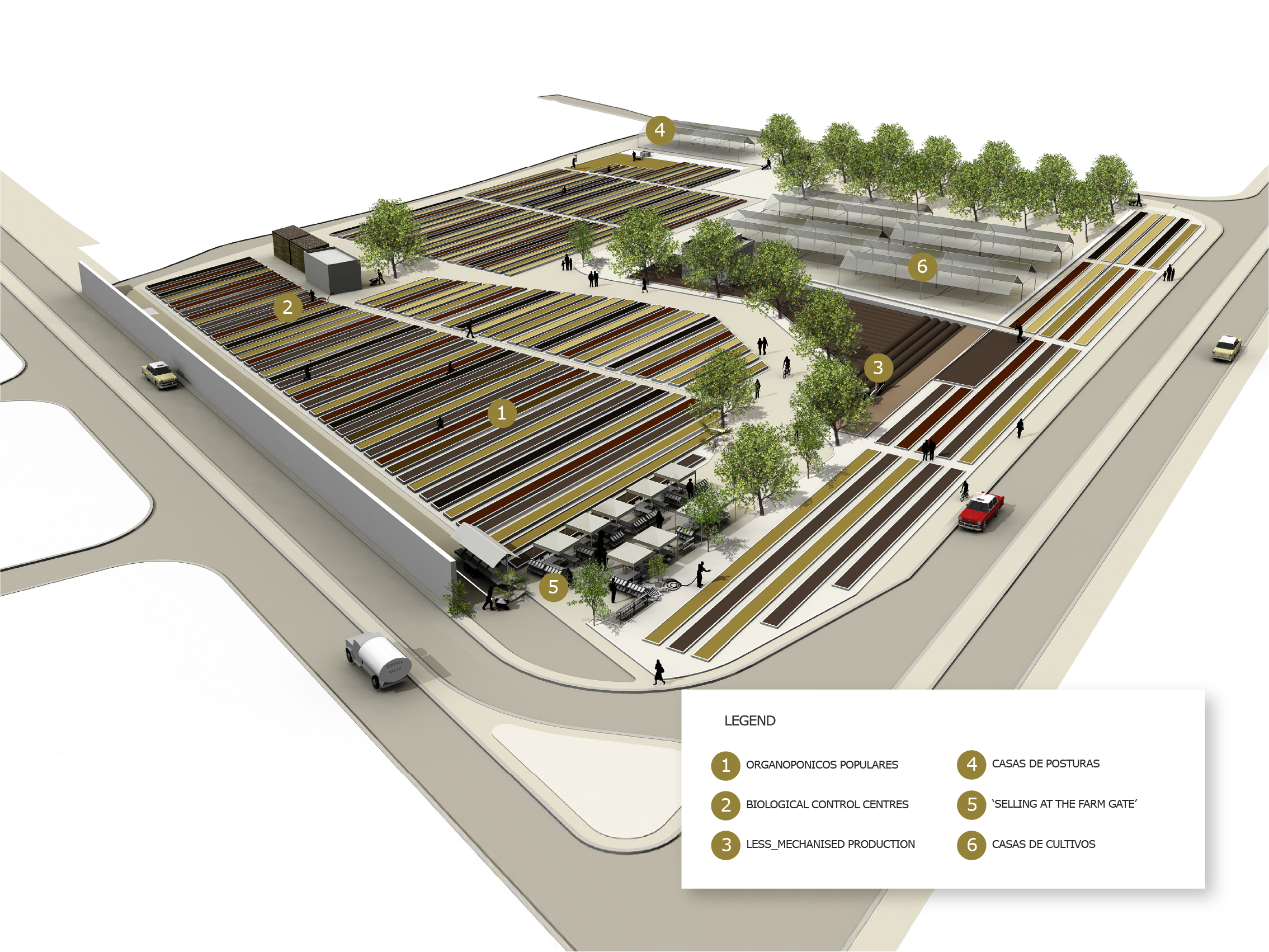Havana provides an ideal model of how a city can be converted on a large scale to intensive urban agriculture, for the purpose of feeding its own population, without the need for damaging, fossil-fuel reliant methods of food production.
At the collapse of the Soviet Union in 1989, Cuba’s supply of oil, agricultural machinery, and chemical-based pesticides and fertilisers were cut almost overnight. Facing the prospect of starvation, the country had to undergo a rapid transformation, to convert to a new means of food production that could be sustained without the need for oil-dependent machinery or chemical based fertilisers. In effect, the people had to re-learn how to live and cultivate to be self-sufficient.
Vast state-owned farms, formerly tasked with growing cash crops for exportation, were broken up into smaller, more manageable community gardens to be tended by the local population. Any open unused space was converted to valuable growing space, meanwhile the government set up outreach and advice centres, employing experts to assist in the training of the local population in intensive agriculture.
Havana is the largest city in the Caribbean and is home to 20% of Cuba’s 11.3million inhabitants.
The collapse of the Soviet Union in 1989 had a devastating effect upon Cuba’s fragile economy which relied almost entirely upon imports from not only oil, but also fertilisers and animal feeds from its communist allies, in order to sustain its highly productive agricultural sector.
In the space of just three years, total imports to Cuba fell by close to 80%, and Cubans suffered unprecedented levels of poverty and malnutrition as a result of its ailing agricultural sector, which had previously been dedicated solely to the production of export crops such as sugar and coffee. The government knew that it must take drastic action to prevent the country from sinking into a further depression from which it would likely never recover.
In order to kick start food production for the purpose of feeding the people, many of the vast state-owned farms were dismantled to make way for many smaller farms which could be adapted to growing a more diverse range of produce, as opposed to its former subsidised production of cash crops for exportation. In addition to this, all open space in the urban areas, including large areas of Habana were converted to private gardens, state-owned research gardens, and the popular ‘organoponicos’, which became iconic of the new approach to extensive food production in the city.
When analysing the ability of an urban area to successfully sustain itself through local food production, it is important to examine the size of its rural hinterland, as the total land area needed to grow the level of food consumed by its citizens. As urban areas especially those in the developed world, expand we find a disproportionate increase in the amount of land needed for food production.
In the case of the Cuban Food Revolution, guidance has been put in place to limit the productive land area available to every town or city, to ensure that land area is available for the expansion of future populations, and not at the expense of nearby local areas. These Productive Area Radii are as follows:
Provincial Capitals (eg. Habana) = 10km
Municipal Main Towns: (eg.Cienfuegos) = 5km
Smaller Towns (eg. Rodas) = 2km

The productive area comparison provides a means of simple statistical analysis to determine the potential of a city to grow sufficient produce within its municipal boundaries to sustain its citizens.
In this case, the productive area comparison identifies the total productive area needed in a Habana to achieve a 90% sufficiency of fruit and vegetables in the city, taking into account the average population density of the city, and total land area available for conversion to food production.

1. Organoponicos Populares
Organoponicos are a Cuban invention, and refer to the practice of growing food using a rich, organic substrate. The term was coined to distinguish it from other intensive, high-yielding horticulture production systems, such as hydroponics, the practice of growing plants in water which, despite its minimial demand for land, relies on a reliable supply of chemical inputs.
Organoponic gardens were an ideal solution for growing crops on poor or contaminated soils in small urban spaces. A typical organoponic garden is started by making furrows in the soil, then lining the rows with protective barriers of wood, stone, bricks or concrete. The soil quality is gradually improved through the incorporation of organic matter obtained from crop residues, household wastes and animal manure.
2. Biological Control Centres
The collapse of the Soviet Union not only cut all supplies of oil to Cuba overnight, but also cut the 1.3million ton annual supply of agricultural fertilisers, upon which the country heavily relied, to deliver the levels of food
production needed to sustain the nation. As a result, Cuba was forced to look for alternatives, and began the immediate production of its own fertilisers and pesticides.
20 years on, 200 biological control centres across the capital now capable of meeting the country’s demand for fertilisers, produce a variety of organic solutions, from bacterial pesticides, to fungal composts, to beneficial insects, for use in the urban agriculture sites, to enhance and promote organic production nationwide.
3. Less-Mechanised Production
Our continued reliance upon fossil fuels means that our highly mechanised methods of food production and processing not only place an increasing strain upon the environment, but they make us highly dependent upon costly imports of foreign oil, and, as Cuba found out at the time of the collapse of the Soviet Union, highly vulnerable. As the flow of oil was cut almost overnight, Cuba was forced to look into alternative means of food production, employing any means necessary to get by.
In the case of Cuba, the most commonly adopted strategy, which still remains popular today, is the use of oxen to work the fields, which becomes increasingly suitable as the larger farms are scaled down to more workable areas of land. The animals, now over 300,000 working in Cuba today, can be fed on excess food from the agricutural site, and organic waste can be used as a natural fertiliser for the plots.
4. Casas de Postura
As a means to maintain a continuous line of production in the urban agriculture sites, casas de postura, or nursery houses are employed to plant seeds and tender seedlings, before they are due to be planted in the open-air raised organoponicos outside.
The nursery houses can be a means to accelerate the growth of seedlings for planting with the urban agriculture site, or can be cultivated for selling as potted plants, to allow for cultivation at home.
5. Selling ‘At the Farm Gate’
Returning to a time when all food was produced locally, and sold locally in nearby population centres, the concept of ‘selling at the farm gate’ allows for products to be sold at a much lower price, as it negates the need for the costly transportation of produce, which accounts for a great deal of the overall cost of food in today’s global food industry. This provides an opportunity in today’s market for local producers to be able to compete with large supermarket chains while the latter are forced to continually increase quantities of scale in order to overcome the increasing price of fuel.
Selling at the farm gate, not only ensures that food prices are kept low, but also that food is cultivated when it is at its freshest (not before), it is seasonal, and it is consumed at its most nutritious.
6. Casas de Cultivo
One strategy which has been widely adopted in Cuba to intensify local food production on smaller plots of land, is the construction of the covered casas de cultivo or ‘cultivation houses’, where climatic conditions can be better controlled/ enhanced, to increase quantities of production, as well as enable to cultivation of a wider variety of fruit and vegetables for local consumption.
Food grown in these cultivation houses is commonly picked and sold by volunteers, who are, in turn, paid through free access to their own share of the produce.
Follow the links below to explore other similar, related projects